Introduction: Today, students collaborated to travel to the British Museum using London’s Underground (aka. The Tube). Once we arrived, we checked in with Dr. McCormick to receive our assignment for the day (More on that in a bit.)

Did you know the British Museum displays over 8,000,000 works/artifacts across 70 different exhibits in over 990,000 square feet? These artifacts represent 2 million years of human history, culture, and art, which attracts over 5,000,000 people annually. There are items here that you have probably heard about your whole life, including the Rosetta Stone, the Lewis Chessmen, sections of the Parthenon marbles, Hoa Hakananai’a from Easter Island, and other important artifacts from Ancient Rome and Egypt. It is quite frankly overwhelming, but we digress… Dr. McCormick asked each of us to identify five unique items from within the museum that relate to public health or healthcare or have some significance to the themes of our course: population health, social determinants of health, and health equity. Each student team was sent off to different areas of the museum to start and we were given 4-hours to undergo our exploration. We documented the location of each item, took photographs, and wrote brief descriptions of their relevance to public health or healthcare.
Here is a sampling of the items we found:
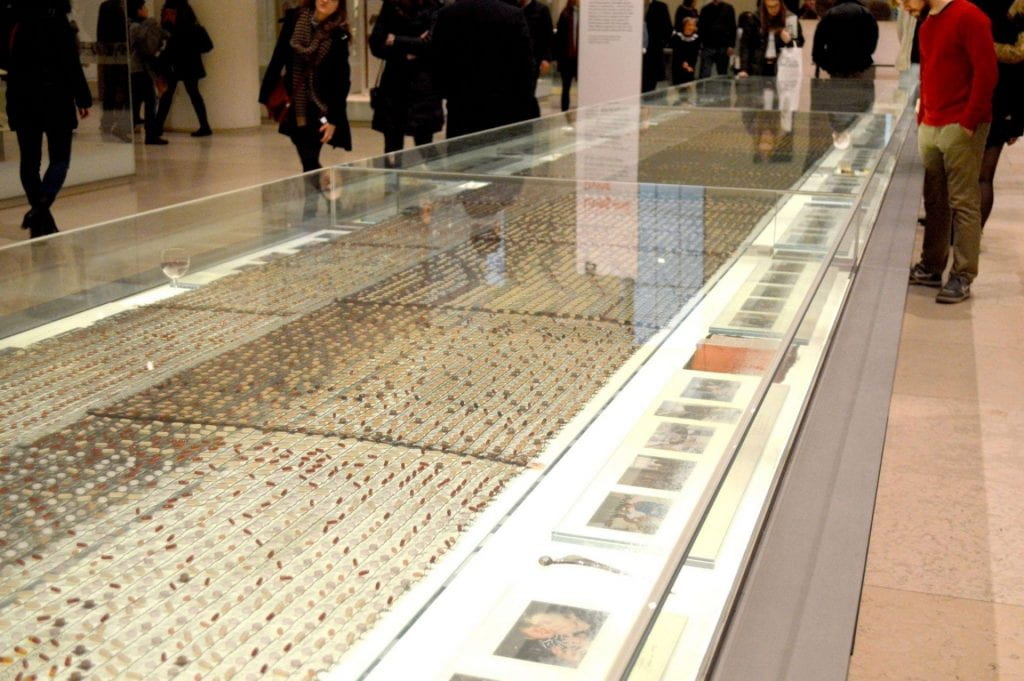
“Cradle to Grave” is a 14-meter display that is located in the middle of the Wellcome Trust Gallery: Living and Dying. “Cradle to Grave” by Pharmacopoeia documents and reveals over 14,000 drugs which is the current estimated average prescribed to individuals living in the UK during their lifetime (http://www.pharmacopoeia-art.net/articles/in-sickness-and-in-health/). The display also included photographs and other medically related artifacts documenting one woman and one man’s life course.

Apollonia was a colony founded by the Ionian Greeks in 610 BC. The picture above is a terracotta pipe that was recently found near Kalfata on the coast of the Black Sea. The pipe is in two sections, flanged at one end so that the next pipe slides in to form a tight fit. As you can see from the image, the two sections are coupled using lead (Pb) to seal the pipe joints from leaks. This pipe was part of a large water system that provided clean water to the people of Apollonia. We have learned from our studies how important clean water is to the health of any population.
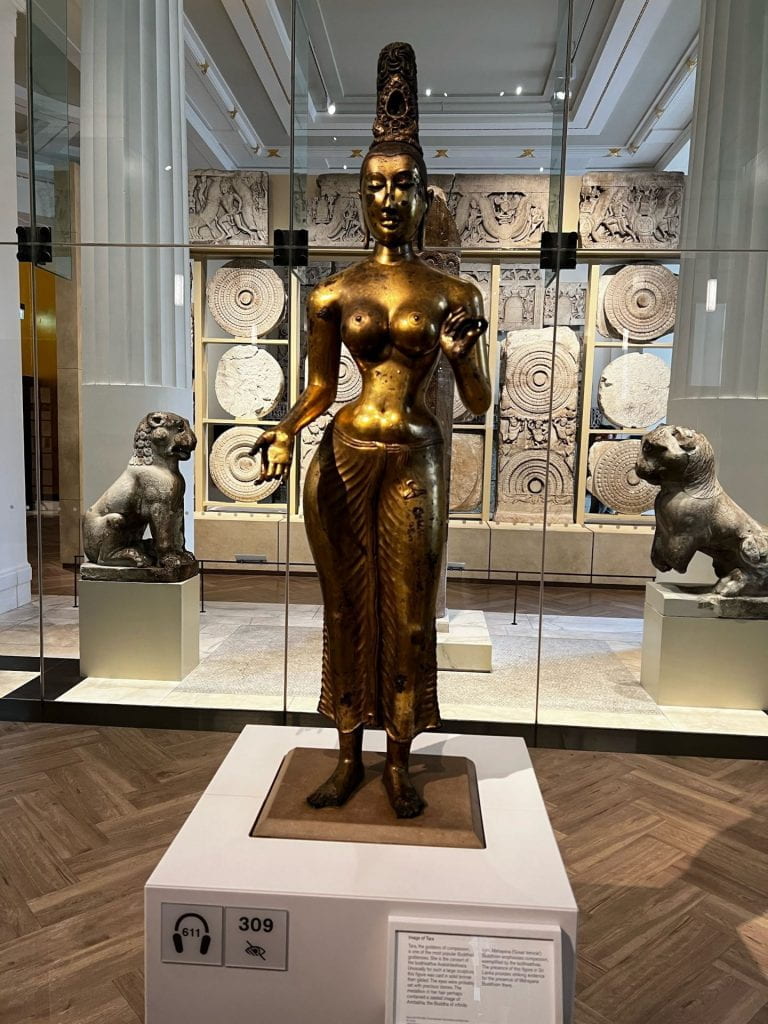
Tara is the goddess of compassion, one of the more famous Buddhist goddesses. When we saw this display, we thought of all the healthcare and public health workers during the COVID pandemic. This unprecedented time has led to many leaving their positions because of stress and burnout. Compassion fatigue reached an all-time high as the public health workforce was overwhelmed with wave after wave of COVID-positive patients. For those who work in the field, we have to remember that we cannot be of service to others if we are not prioritizing our own health.

In Babylonia and Assyria, many devices were designed to protect people from evil and disease. Objects, such as the model clay dogs above, were buried beneath palace doorways in order to prevent misfortune and protect from disease.
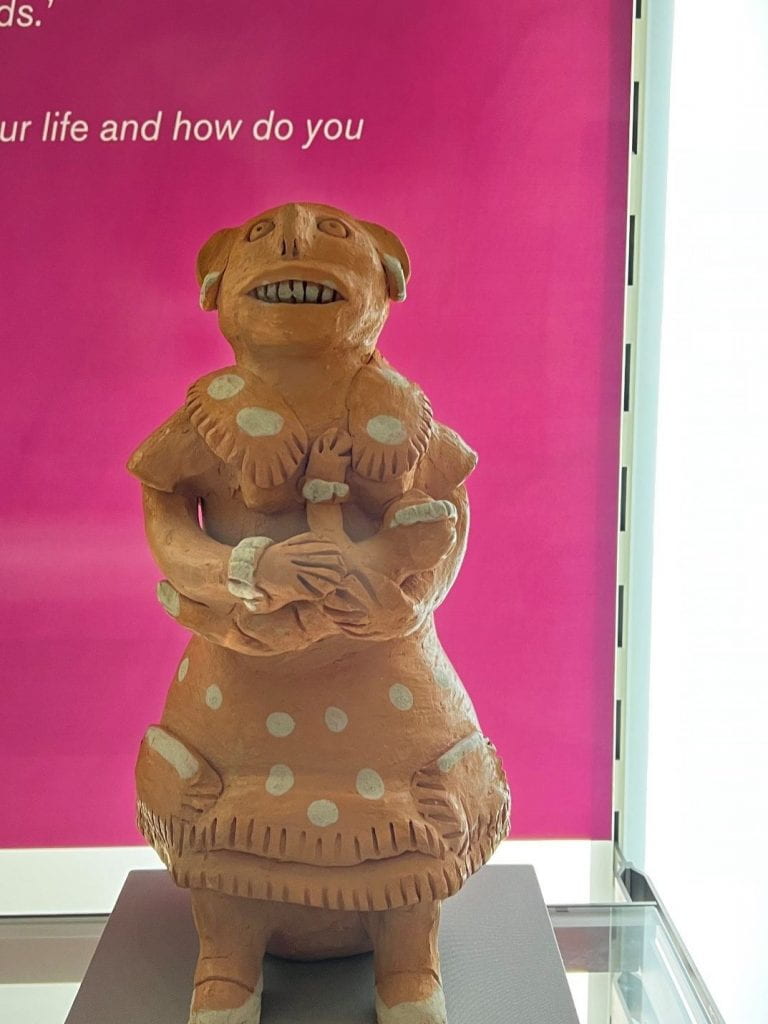
This figure is of a mother breastfeeding her child and represents the beginning of a life nurtured and cared for by a family. According to its description, it depicts the bond between the mother and baby. Maternal and child health is an important part of population health. Improving the health of mothers and children determines the health of the next generation.

As we have discussed over the past several days, London was a dirty and disgusting place in the mid-19th century. Bottles such as these would have been filled with fine perfumes allowing the wearer some reprieve from the stench filling the streets. In 1858 this “great stink” finally led to much-needed reform in the city’s sewage system leading to even greater public health improvements and a significant reduction in waterborne illnesses and death.
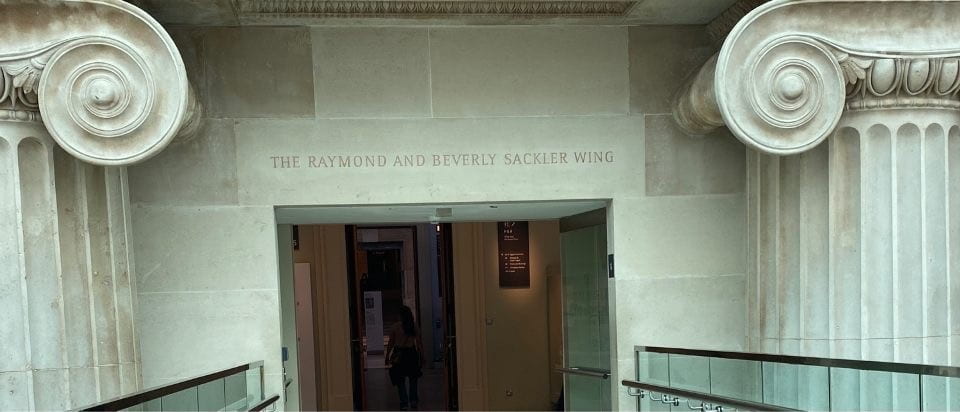
Public health is everywhere, often showing up in unintended places. In this instance, the Sackler family has a wing dedicated to them at the British Museum. This family, once known as prominent art philanthropists and leaders of the pharmaceutical company Purdue Pharma, are now more known for their association with the opioid epidemic. Many institutions went so far as to have the Sackler name removed from architecture wherever possible.
To conclude the day, we gathered for a “high tea” at The Great Court Restaurant. The concept of “high tea” was introduced in the 1840s by the seventh Duchess of Bedford, Anna Maria Russell. The growth of industrialization influenced the timing of daily meals. As the time between meals grew longer, the Queen’s ladies-in-waiting were hungry in the middle of the afternoon. Therefore, the concept of afternoon tea was born (which includes a biscuit or scone with butter and jam with a cup of hot tea.) Anna’s habit of having a mid-afternoon indulgence became a British tradition. High tea is a bit more lavish than traditional afternoon tea and includes in addition to scones and tea, small finger sandwiches and small bites of delicate cakes and other confections. While the class did not engage in the formal attire of upper-class society of the 1800s, it was a great experience shared among peers.
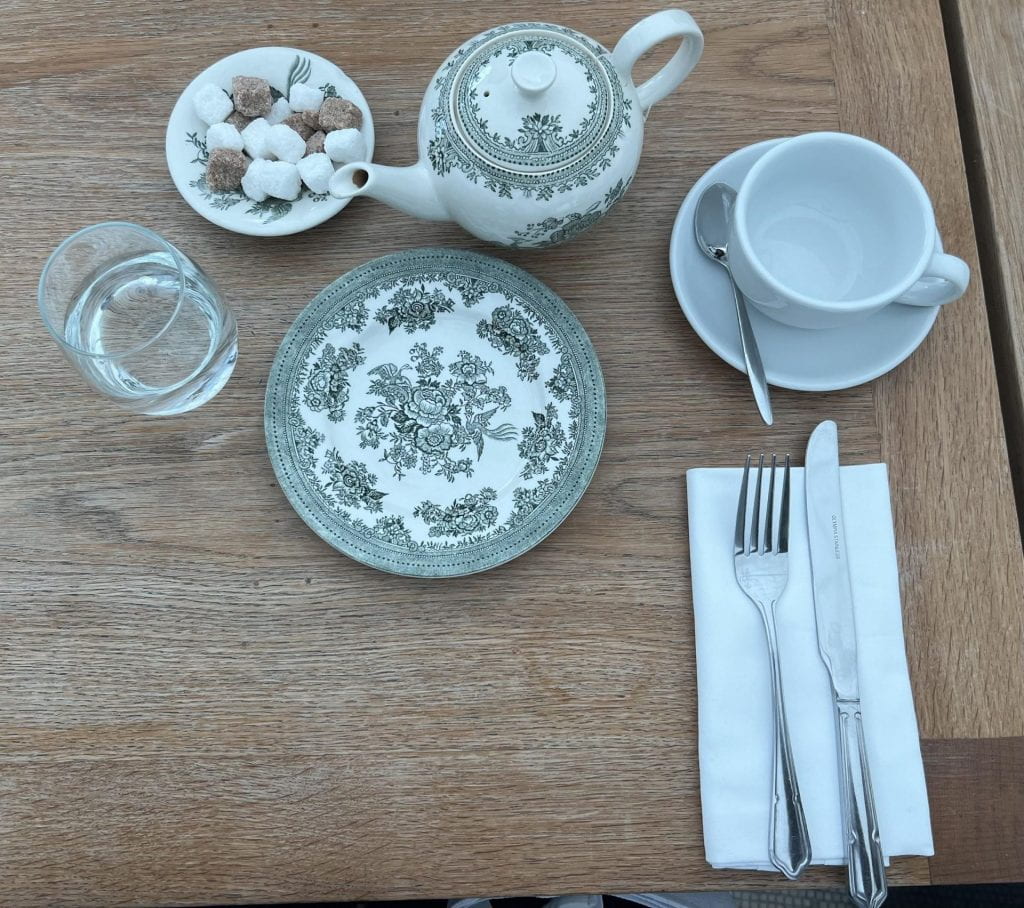
High tea at the Great Court Restaurant 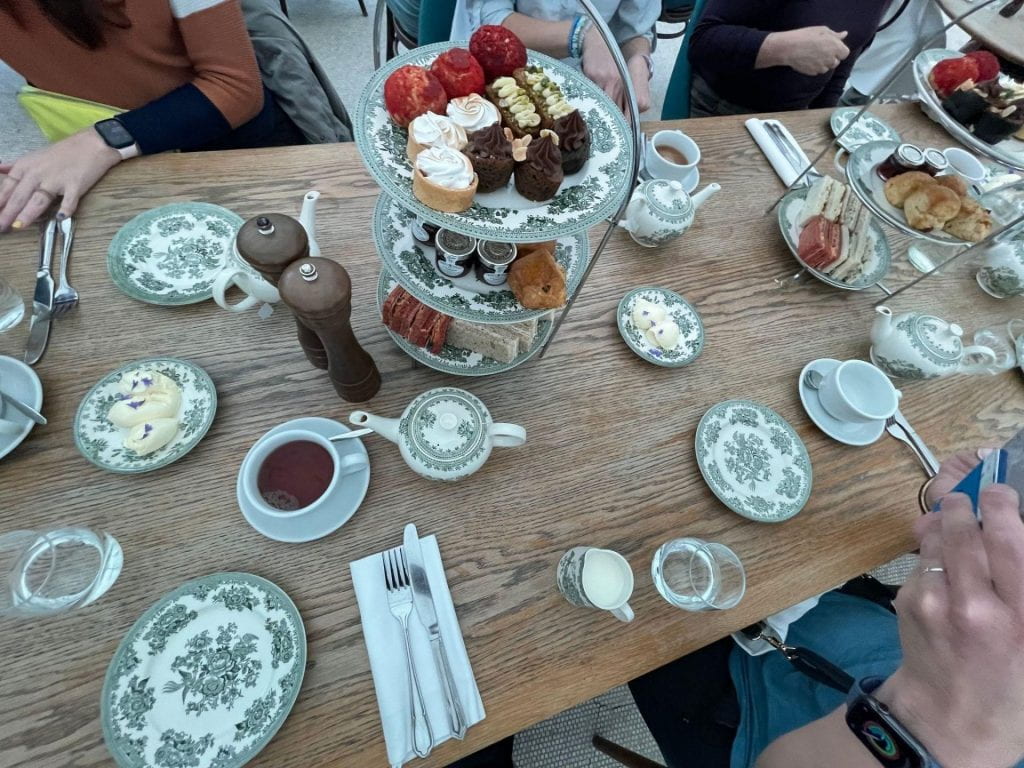
High tea at the Great Court Restaurant
Credited by: Porsha Edwards, Alliemarie Humphries, Catrell Johnson, Yesi Villanueva
